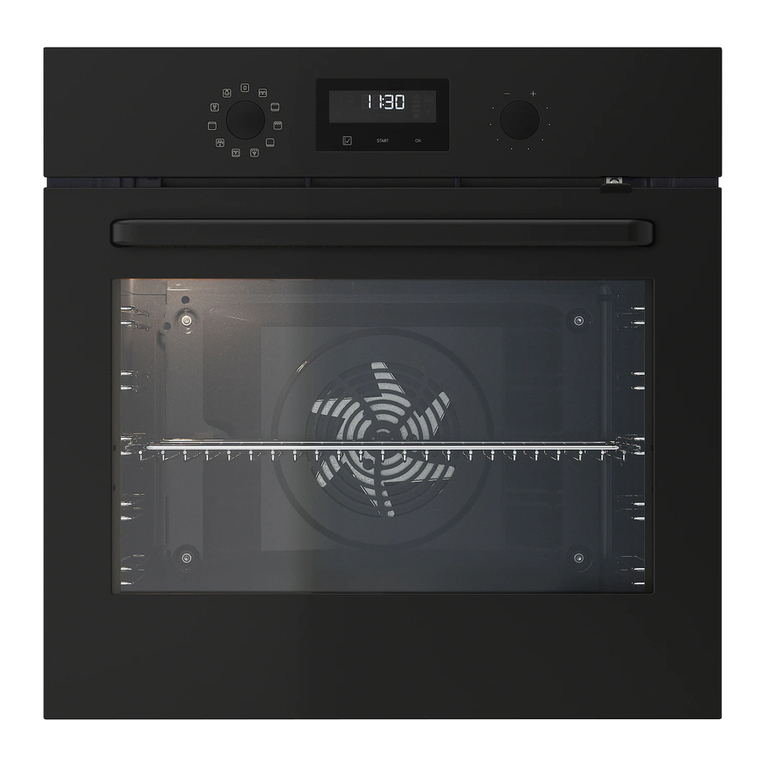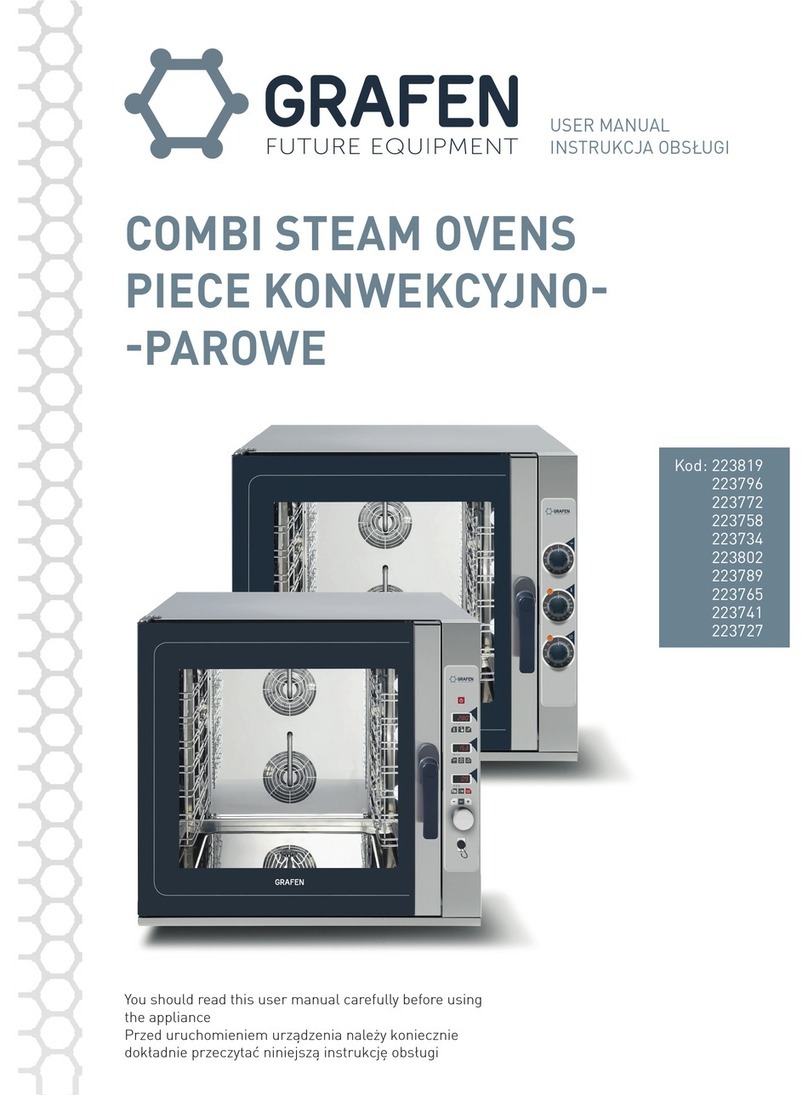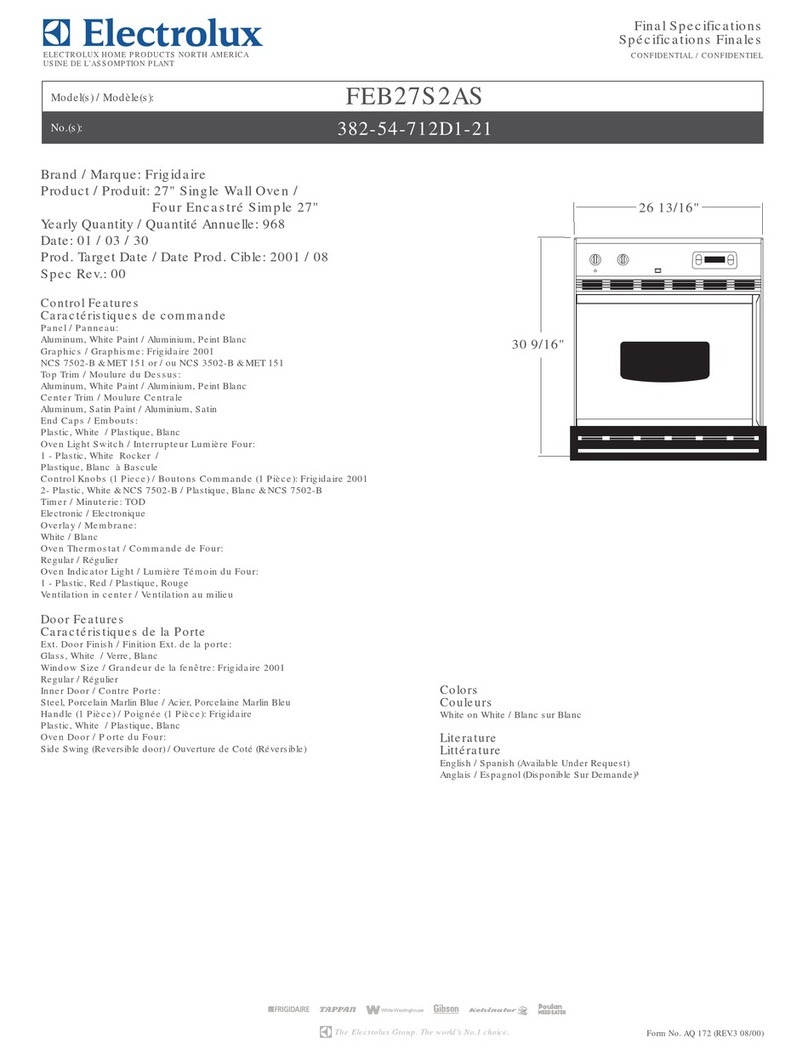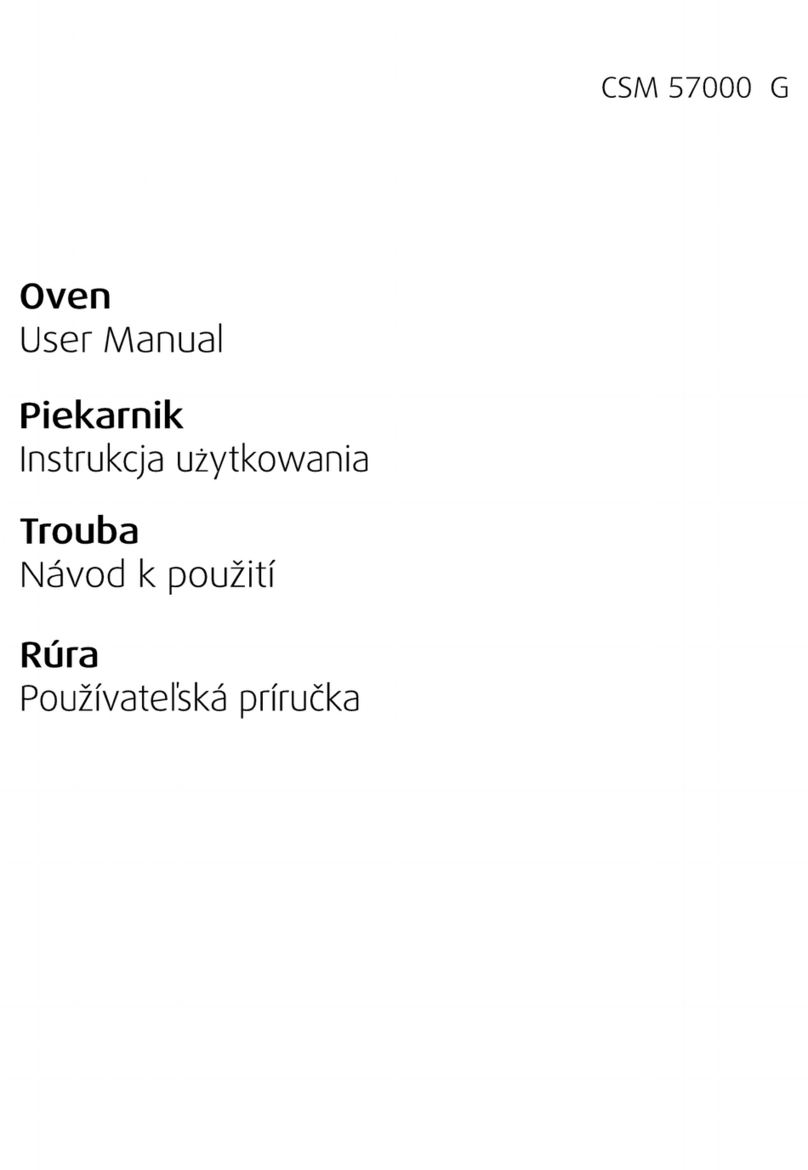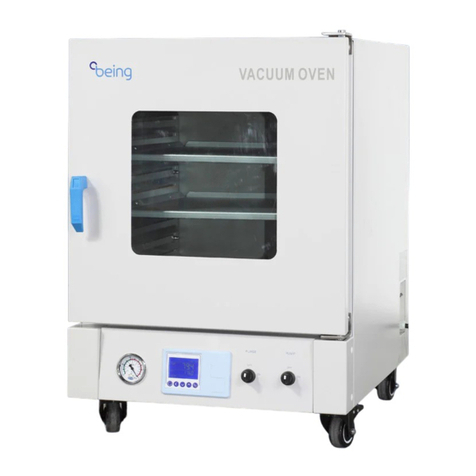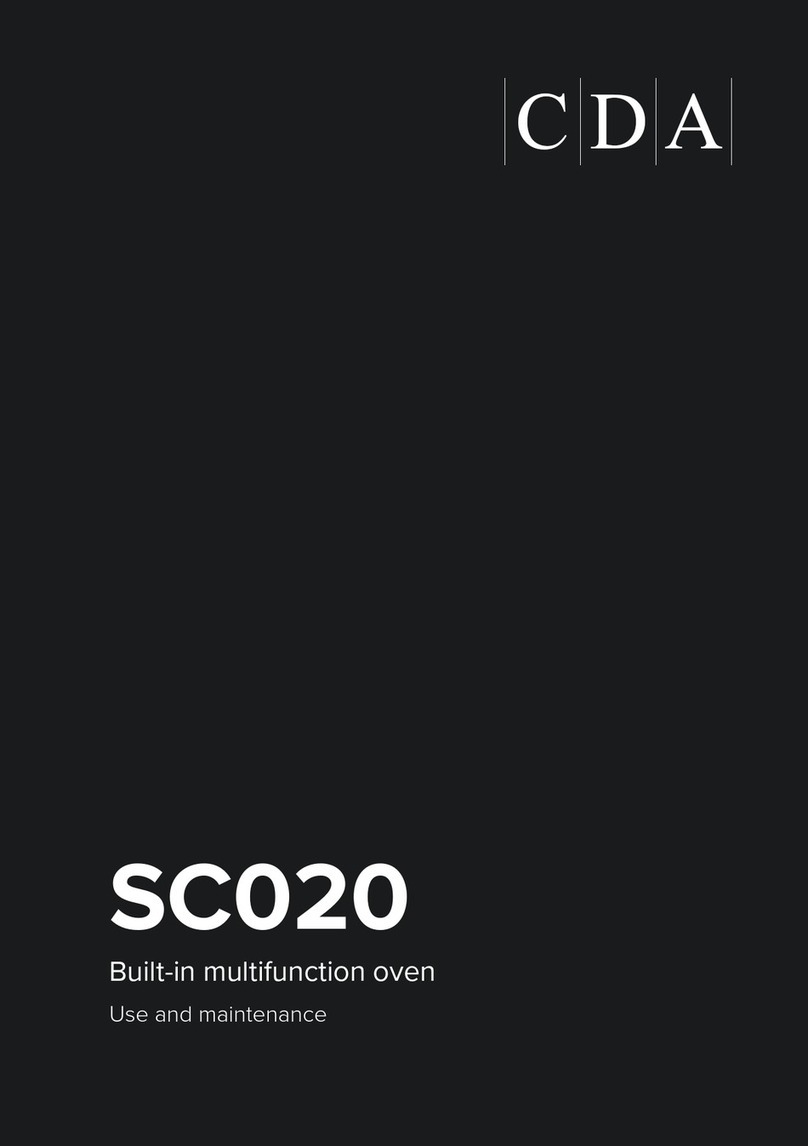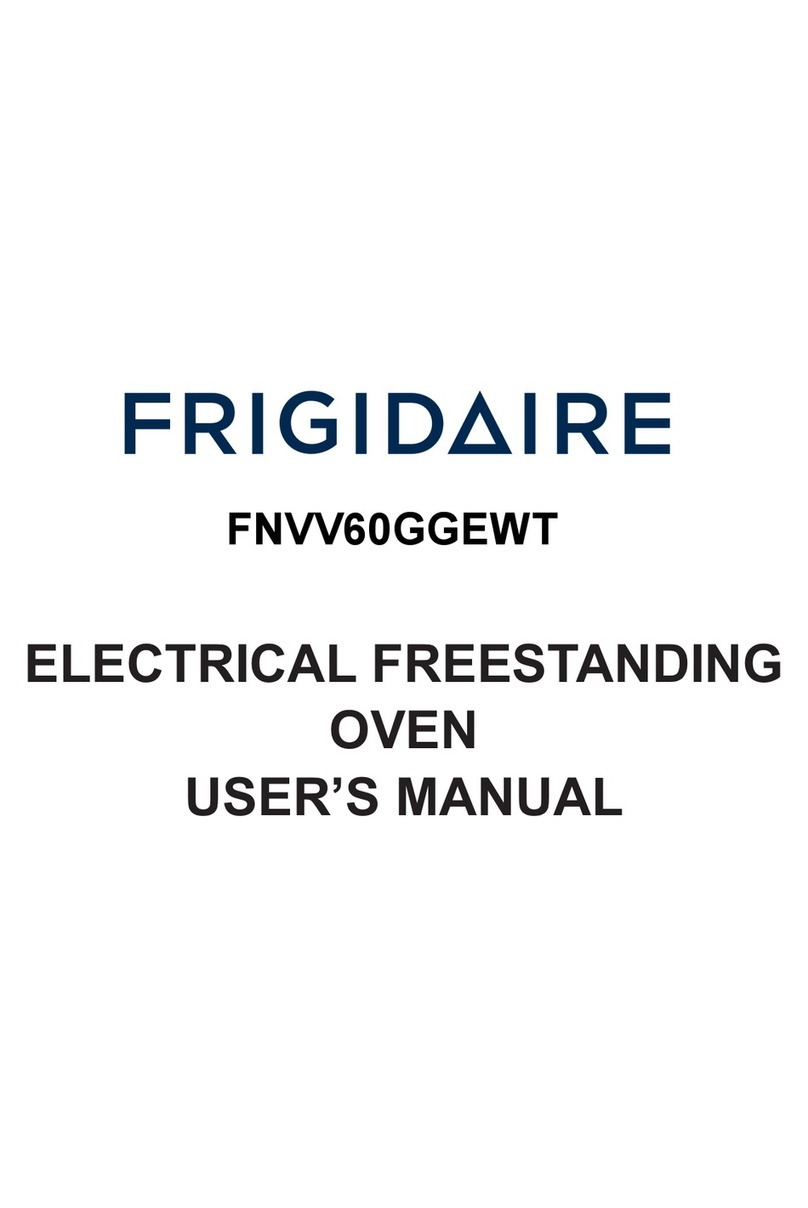Igneus Ceramiko 600 Installation and operating instructions

Igneus Ceramiko 600 wood fired oven
Assembly and operation manual

Contents
1. About your Igneus Ceramiko 600 oven
1a. Oven finish
1b. Soot
1c. If your oven chips or cracks
1d. Oven reinforcement fibres
1e. Oven maintenance
2. Igneus Ceramiko 600 Oven assembly
2a. Oven and Flue Clearances
2b. Oven Delivery
2c. Oven dimensions
2d. Oven Location
2e. Oven Installation
2f. Oven Assembly
2g. Metal stand assembly
2h. Rendering your oven
3. Igneus Ceramiko 600 oven use
3a. The don’ts when using your oven
3b. What wood to use in your oven
3c. How to make fire
3d. Lighting your oven for the first time (or lighting during Autumn and Winter)
3e. How to cook in your oven
3f. How to dispose of ashes safely
3g. Oven tools

4. The Clean Air Act 1993 and smoke control areas
4a. Use in Smoke Control Areas
4b. Refuelling
4c. Overloading
5. Igneus Ceramiko 600 oven warranty
5a. Investigation of claims against warranty
5b. Warranty Qualifications
5c. Limitation Liability
5d. How to register a claim against the warranty
6. Important fire and safety notice

1. About your Igneus Ceramiko 600 oven
Congratulations, you are now the owner of an Igneus Ceramiko 600 wood fired pizza oven
which has Micro-Mesh reinforcement and is hand cast in the UK by a factory which
specialises in producing some of the best professional pizza ovens in the country.
Before using the oven, follow the Manual installation steps, check that there are no obvious
defects in the oven and that the safety information has been read and understood by
anyone using the oven. Failure to do so may void the oven warranty.
1a. Igneus Ceramiko 600 oven finish
The Igneus Ceramiko is a refractory based oven, which means that due to the nature of the
materials used to make your oven and the hand casting process, natural variations between
ovens is expected. From variations in colour, minor pitting in the oven surface to minor
surface chipping. This means that each oven we produce is unique, adding to its rustic and
individual charm.
1b. Soot
After the first use, your oven may become blackened in parts, usually (but not exclusively)
on the inside roof of the oven. This is due to soot accumulation and is a normal expectation
of any refractory based wood fired oven.
1c. If your oven chips or cracks
Take care when manoeuvring your Igneus Ceramiko oven into position, as some parts are
heavy, (the dome for example) and therefore slight chipping may occur. If chipping does
occur and you are using your oven in its raw state, simply ask our team for a patch kit if
needed. If you are rendering or tiling your oven, you will find that the build process you use
conceals the chipping, so a kit will not be needed.
Please note that due to the expansion and contraction of your oven during operation, the
appearance of hairline cracks, visible during and after operation inside or outside your oven
is to be expected, however please be assured that because the Igneus Ceramiko range has
steel fibre woven into the canopy to reinforce it, so it is very unlikely that the integrity of the
oven will be affected if small cracks occur. This is a normal expectation of any refractory
built wood fired oven, but be assured this will not affect the longevity and effectiveness of
your oven.
1d. Oven reinforcement fibres
On very rare occasions, there is potential for the fine steel fibres to protrude from the oven
base or dome usually on the edges. Please take care by wearing gloves when manoeuvring
and handling the oven. If needed, these fibres can simply be removed or trimmed away.

1e. Oven maintenance
At last, a self-cleaning oven! The Igneus Ceramiko 600 needs very little cleaning and
maintenance. Any spilled or food which drops onto the cooking floor will be burnt off by the
heat achieved within the oven in a matter of minutes. When your oven has totally cooled
down, (which can take up to 24+ hours if your oven has been insulated) simply dust out the
ash before the next firing in a safe way (see section 3f).
Ensure you regularly clean your oven flue to prevent a build-up of soot within the chimney
(in the same way that you would get a chimney sweep to regularly clear the chimney of a
log burner). This will prevent the possibility of a flue fire.
2. Oven Assembly
2a. Oven and Flue clearances
The oven clearances quoted in this document are recommended for your safety and the
safety of your property. It is essential that these clearances are maintained from any
combustible materials, failure to do so may result in fire.
When rendering your oven, please allow at least 80-100mm on the exterior dimension of
your oven to allow for the insulation blanket and render. Please note that the Igneus
Ceramiko 600 cannot be insulated if it is built on the Ceramiko stand.
When your Igneus Ceramiko 600 is installed, we recommend that you ensure that the
external wall of the oven has a clearance of 100mm from any fence panels or walls, and a
clearance of at least 900mm from the flue length to any fence panels or walls are observed.
Ensure nothing obstructs the flue from directly above. If building into a structure or kitchen,
please consult a professional chimney installer who will ensue that your oven is vented and
flued out correctly and safely.
2b. Oven Delivery
When your oven is delivered, it will be delivered kerbside to the front of your property by a
pallet delivery company.
We recommend that you move the oven into position by lifting the individual pieces, rather
than trying to move the pallet in its entirety. Note, your oven weighs 180kg in total, split
between the 2 x base pieces and the 1 x dome piece. Each oven piece is designed to be
manageable to lift with 2-3 strong adults who are trained in lifting techniques. Please take
care when lifting, manoeuvring and assembling the pieces.
Included in the Igneus Ceramiko 600 package: The Igneus Ceramiko 600, oven door, single
skinned flue length, flue rain cap.

Accessories available include the insulation kit (high heat refractory insulating blanket,
calcium silicate insulating board, high heat fire cement and a decorative archway) and the
rendering kit.
2c. Oven dimensions
2d. Oven Location:
Ensure that your oven is being installed in a sheltered location, taking common wind
direction and drafts into consideration – make sure that the oven is sheltered from wind
blowing directly into the mouth of the oven as this will dramatically affect the performance
of the oven. If you are installing your oven under a cover such as a pergola, then appropriate
measures to meet local government fire regulations, local restrictions/laws and health and
safety measures must be undertaken. Igneus Wood Fired Ovens do not accept any liability
where these or similar measures have not been met when the oven is installed.
2e. Oven Installation
If being installed onto a pre-constructed stand or outdoor kitchen area, the structure it is to
be built onto must be able to bear a total weight of 250kg. The structure must have a solid,
non-combustible surface, with the total being spread evenly across the structure. For the
oven dimensions, please refer to section 2c above, and remember to allow at least 80-
100mm extra all the way round the circumference of the oven for the insulation and render.

The Igneus Ceramiko 600 oven can be finished in a range of different designs using differing
non-combustible materials such as render, brick, stone or mosaic tiles. For inspiration, why
not visit our website gallery for design ideas to suit your home or garden.
2f. Oven Assembly
Important Notes
• Wear protective mask and goggles when cutting and handling the insulation board
and when insulating the external canopy of the oven.
• DO NOT place fire cement between the oven base joints, this will affect its ability to
fit together.
• Heavy: The oven dome and base parts are heavy and fragile, handle with extreme
care when moving to prevent oven chipping.
• We recommend anyone lifting the oven is adequately trained in lifting techniques.
Lift the heavy oven pieces with two or more people.
• To ensure the oven floor is installed level, you can bed under the base pieces using
sand or fire cement for a level finish.
• Keep fingers and clothing clear from oven base and joints during set down and
assembly.
After building your oven base to the Igneus Ceramiko 600 the above specification, lay your
insulation board onto your oven base to cover the total shape and footprint of the oven
floor including allowing the extra 80-100mm all the way round for the insulation and render
layers. Trim the board into shape using a saw and use ‘cut offs’ to fill in any gaps. When
laying the insulation board into position, check that it is flat and totally level using a spirit
level.
With the base of the oven complete and your insulation boards in position, follow these
steps to assemble your oven;
Laying the oven floor:
Step 1: Set down the front floor segment into position first. Notice the front floor
segment is the mouth of the oven and has a squared end. Check the front segment is
in the desired location and check that it is level and centralised.
Step 2: Set down the rear floor segment and lock it into position by sliding the
overlaps together. Once these are in position, check they are level. If the floor is not
level, then please use a fire cement or sand bed beneath the oven floor segments to
level. The oven floor is now laid. Important – do not use fire cement between the
oven floor pieces.
Setting the oven dome in place:
Step 3: The 600 dome is a single piece and is heavy, so you will need at least 3 strong
men in order to position it. To position the dome, place 3x rounded broom handles

(wide enough for the oven dome to fully sit onto them) onto the top of the oven
floor. Once in position, lift the dome onto them and roll the dome into position.
Once correctly positioned, lift the front of the dome archway up, so that the wooden
brooms can be removed. Lower the oven dome into position, so that it locks into the
base below.
Step 6: Once the oven is assembled, use the included fire cement to ‘seal’ the
external joints between the four dome segments. See below: Sealing the Oven.
Sealing the Oven:
1. Using a damp sponge, generously dab water on the joint lines on the external
surface of the oven dome.
2. Generously apply fire cement to entirely fill the external joint lines on the oven
dome surface. Do not use fire cement inside the oven.
3. Once the oven has been assembled and the fire cement has been applied and has
set, check the seal of the oven by lighting a small fire with two pieces of newspaper
to check for smoke leaks. If any leaks are found, use more fire cement on the
external dome to fully close the seal.
The oven is now ready for insulating and for the archway to be installed. Refer to section 2h.
Installing the Flue Manifold:
The Igneus Ceramiko 600 oven is supplied with a 6 inch/150mm single skinned flue as
standard. Place your flue into the flue hole in the Igneus Ceramiko 600 oven, this should be
a snug fit, but not tight, as chimney expansion occurs when the oven is in use.
If you are extending the chimney or installing the oven into a structure, then additional
chimney parts will be required. Different shapes and finishes can be achieved with a flue
system extension, ask the Igneus Wood Fired Oven team for recommended flue suppliers.
Warning
Please be aware that some flue lengths, flue caps and angle bends may have sharp edges, so
be careful when handling chimney sections and wear protective gloves if necessary.
Single Walled Flue Systems are for outdoor installation ONLY. The Igneus Ceramiko 600 is an
outdoor oven and must not be installed inside a walled structure. It can be installed into a
Pergola, but it must be vented out using twin walled flue. For more information on Pergola
installation, contact the Igneus Wood Fired Oven team.
It is your responsibility to ensure your flue meets local council and government guidelines
and is regularly cleaned to reduce the risk of flue fires.

Insulating the oven:
Note – the Igneus Ceramiko 600 cannot be insulated if it is built onto the metal stand. If
built onto a pre-built structure, it can be insulated and rendered. Once your oven dome is
built and fully sealed and tested, lay the insulation wool over the oven, ensuring you overlap
all joints. DO NOT leave any part of the oven’s dome on show. Insulation thickness is
dependent on your requirements, with a minimum of one to two layers thick, but bear in
mind the external space you have available – the more you insulate, the bigger your oven
becomes. You may want to add additional insulation wool to your oven dome such as rock
wool or loft insulation on top of the provided insulation wool layer – this is at your
discretion. For more details, refer to section 2h.
Top tips
For an igloo style finish, follow this step by wrapping the entire oven with chicken wire and
pinch together to create the finished shape, Repeat using plasterers Lath. Finish with our
approved render.
For brick enclosed ovens, install the oven as above, including your chimney as required.
Brick around the oven, then layer the oven with insulation wool and fill the void with extra
fireproof insulation from above. Finish the structure by building the roof, allowing for the
chimney to be safely installed.
Always wear a protective mask and goggles when cutting and handling insulation wool and
board.
Finishing Your Oven:
There are many different types of enclosures you can create with an Igneus Ceramiko 600
oven using different building materials from wood to brick, tiles, render and stone, the
options are almost endless.
To finish your oven, ensure that you follow the installation instructions above, then apply
the final layer of finish such as render or brick using normal building methods. For more
inspiration on build styles for the Igneus Ceramiko 600 oven, see
www.igneuswoodfiredovens.com
2g. Metal stand assembly
If you have purchased the Igneus Ceramiko 600 stand, you will need to assemble this before
placing your oven into position. The stand can be built by bolting the legs onto the bottom
shelf and top. To do this you will need two adjustable wrenches, which will be used to
tighten up the nuts and bolts. This is a simple job which should take you two people no
more than 15-20 minutes.
Important note

If you are placing your oven onto an Igneus Ceramiko 600 stand, please note that you
cannot add insulation or render to the oven, so your oven must be kept in its raw state. We
advise applying the approved sealant by painting it onto the exterior of the oven at least
every 6 months to protect your oven from excessive damp ingress. If you need more
information on this, please contact one of the team at Igneus Wood Fired Ovens.
2h. Rendering your oven
NOTE – Do not try to render your oven if you have built it onto the Igneus Ceramiko metal
stand as it will not work
Step 1
Using the fireproof cement, set the arch into position and allow to set.
Step 2
Next drill holes into the base structure all the way round your oven 50-60mm from the outer edge of
the oven wall, at a frequency of every 150mm, then screw in eye screws or hooks to attach the mesh
to in the next step.
Step 3
Loosely place your insulation material around the oven, you are using the insulation not only for
insulation purposes but also to generate an aesthetic shape. The Igneus Ceramiko insulation kit
includes a large amount of ceramic wool blanket, however you may need to still add additional
fireproof insulation to generate your preferred oven shape. Note, your chimney can be set to go

straight up (as supplied), or it can be profiled using additional chimney parts to be centred at the top
of the oven as shown in the image below.
Once you have loosely laid the insulation around the oven, it is time to attach chicken wire to the
hooks that you earlier drilled into the base structure. Pull the chicken wire around the oven encasing
the insulation layer and form your shape. You can pack additional fireproof insulation in if your shape
is not even. Once a satisfactory shape and finish is achieved, tie your chicken wire to the hooks using
metal wire or cable ties to secure it in place.
Step 3.
Once your chicken wire is safely in place and your desired shape has been achieved, attach the
bottom of a piece of metal plasterers lath round the oven onto the hooks earlier inserted, Using an
angle grinder make incisions in the lath to make it more pliable, stopping around 150mm from the
bottom of the lath, this will allow you to fold the lath in on itself and mould to your chosen shape.
Fold all the lath in onto your chicken wire and secure with metal wire or cable ties to hold in place. Do
this until all the lath is fully supported. Apply the lath to the top of the arch, so the render can be
applied to the front face of the arch.

You are now ready to render your oven.
Step 4.
Apply your render to the mesh. We recommend the use of the Igneus Ceramiko Render Kit for this
job, however if making your own render use sand and cement, 4 parts plastering sand, 1 part cement,
and a glug of PVA.
With a trowel apply this to the mesh ensuring an even coat of render is applied to the entire external
surface of the oven, until the entire oven is covered. Wait for the render to be 90% set and then wipe
it over with a damp sponge, to work out any trowel lines and to create a smooth surface.

Once the render has dried this can be painted with a standard masonry paint in your chosen colour to
protect it from the elements.
3. Using your Igneus Ceramiko 600 Oven
3a. The don’ts when using your Igneus Ceramiko 600 oven
DO NOT use flammable liquids or sappy wood
DO NOT use treated wood or non-organic firelighters
DO NOT cover the entrance of the oven with anything other than the door (supplied)
DO NOT place combustible materials within oven clearances
DO NOT overfill the oven with wood
DO NOT use coal or charcoal in the oven
DO NOT touch hot surfaces with naked skin
DO NOT leave the oven unattended whilst in operation
3b. What wood to use in your oven
Igneus Wood Fired Ovens strongly recommend using kiln dried hardwood such as Alder, or
compressed Beech briquettes in your oven. Note – seasoned wood, green wood or any
wood with moisture content above 20% will cause your oven to generate excessive smoke
and it will struggle to reach high temperatures.
Top tip
To ‘kiln dry’ your own wood, simply place a stack of wood into the oven (as far away as
possible from where the fire was set) after cooking one evening, but make sure the oven
temperature has dropped significantly. The lower retained heat in the oven will dry out your
logs for future use, but make sure they don’t ignite whilst inside the oven. Ensure you have
removed all embers before you place the logs in the oven. Do not leave the oven
unattended. Please note, this tip only applies to natural hardwood.
3c. How to make a fire
Follow these instructions when lighting your oven;
Step 1
Using your kiln dried hardwood, chop a few logs down using a small axe or wood
cutter into chunky kindling lengths of around 10 inches and about 2-3 inches thick.
Note - Shop bought, ready cut kindling can often be too small for this oven and will
therefore not reach the desired temperature
Using a natural fire lighter such as Twizzlers, place it in centre of the oven floor, build
a cross sectioned structure around it using your cut kindling to a height of
approximately 20cm. Ignite the natural fire lighter with a match. See images;

Place Fire Lighter Form kindling stack Ignite the Fire Lighter
Step 2
Leave the fire stack to burn in the centre of the oven for around 3-4 minutes, then
add more kindling pieces to the stack in a pyramid shape, to encourage the fire to
increase in size and temperature. This process ensures the oven dome and base is
saturated with heat evenly. Continue to add larger kindling pieces or small logs to
the burning kindling stack as the oven heat increases. You will start to approach
optimum cooking temperatures 450+ degrees Celsius and you can read the oven
floor heat using an infrared thermometer or a floor standing thermometer. If you
don’t have a thermometer then keep your eye on the inner roof of the oven for
when the sooty deposits on the oven ceiling diminish. The lighting process typically
takes around 25 minutes in the Igneus Ceramiko 600 oven.
Step 3
Once you have reached optimum cooking temperatures, (450+ degrees Celsius) you
are ready to start the cooking process. Move the embers of the fire to the back or
side of the oven using an ash rake. This will expose the red-hot cooking area which is
where you will place your pizza or food trays or pans. Use a brush to clear any debris
or ash from the oven floor, then using your pizza peel, place 1-2 kiln dried logs onto
the fire inside the oven.
Top tips
Always bring your oven up to optimum cooking temperature whatever you are going
to cook first, this ensures the oven is saturated with heat, and will make sure it stays
hotter for longer.
Remember to rotate your food whilst in the oven to ensure even cooking.
Alternate embers on each side of the oven when cooking over long periods to ensure
an even distribution of heat whilst cooking.
3d. Lighting your oven for the first time (or lighting during Autumn and Winter)
Your oven may take a little longer to reach optimum temperatures on your first firing. This is
normal and is due to residual moisture in the oven from the manufacturing process.
When lighting for the first time, make sure that you light the oven slow and steady, at a
stable rising temperature for around 30 minutes. Then allow the oven to cool off naturally.

This process will ensure that the moisture trapped within the floor and walls of the oven is
slowly drawn out.
In Autumn and Winter during wet weather or low temperatures, ensure you light the oven
slow and steady, at a stable rising temperature for around 30 minutes before using the
oven. Once done, you can resume your normal lighting regime.
Failure to light the oven slowly in these instances may affect your oven warranty.
3e. How to cook in your Igneus Ceramiko 600 oven:
The Igneus Ceramiko 600 oven has the same cooking abilities as all of our wood fired oven
range. You can cook virtually anything in a wood fired oven and achieve a range of different
cooking techniques. Cook pizza, roast, grill, bake and more using the different phases of
heat in the oven. For excellent foodie inspiration, there’s a myriad of wood fired cooking
content online from many top chefs. A great start is searching ‘The Wood Fired Oven Chef’
on YouTube.
Top tip
The door provided with your oven can be used for a range of different cooking techniques
including roasting and baking. Take care whilst using the oven door as it will get hot, so
always wear heatproof gloves when handling it.
3f. How to dispose of ashes safely
Even if it has been over 24 hours since use, the ashes from your oven can still be a fire risk.
Ensure you wait until the oven is cold before attempting to remove the ash. Remove the ash
with appropriate tools e.g., ash rake or oven brush and place them safely into a metal
bucket with a sealable lid away from combustible materials. If required, douse the embers
out in the bucket using plenty of cold water.
3g. Oven Tools
To run your oven safely and effectively, it is essential that you use the correct tools. A range
of tools are available to purchase on our website from our online store. Ensure all pans used
are appropriate for use in ovens capable of very high temperatures. We recommend cast
iron pans for cooking in your wood fired oven, all accessories available from
www.igneuswoodfiredovens.com
4. The Clean Air Act 1993 and Smoke Control Areas
Under the Clean Air Act local authorities may declare the whole or part of the district of the
authority to be a smoke control area. It is an offence to emit smoke from a chimney of a
building, from a furnace or from any fixed boiler if located in a designated smoke control
area. It is also an offence to acquire an “unauthorised fuel” for use within a smoke control
area unless it is used in an “exempt” appliance (“exempted” from the controls which
generally apply in the smoke control area).

The Secretary of State for Environment, Food and Rural Affairs has powers under the Act to
authorise smokeless fuels or exempt appliances for use in smoke control areas in England. In
Scotland and Wales this power rests with Ministers in the devolved administrations for
those countries. Separate legislation, the Clean Air (Northern Ireland) Order 1981, applies in
Northern Ireland. Therefore it is a requirement that fuels burnt or obtained for use in smoke
control areas have been “authorised” in Regulations and that appliances used to burn solid
fuel in those areas (other than “authorised” fuels) have been exempted by an Order made
and signed by the Secretary of State or Minister in the devolved administrations.
Further information on the requirements of the Clean Air Act can be found here :
https://www.gov.uk/smoke-control-area-rules
Your local authority is responsible for implementing the Clean Air Act 1993 including
designation and supervision of smoke control areas and you can contact them for details of
Clean Air Act requirements.
4a. Use in Smoke Control Areas
The Igneus Ceramiko 600 oven is manufactured on our behalf by a UK based factory. The
master design of this oven held by the factory has not been approved by Defra as suitable
for use in smoke control areas when burning wood and in accordance with the instructions
in this manual. This means that the Igneus Ceramiko must be used in an outdoor setting.
4b. Refuelling
When refuelling, smoke emissions can occur if fuel is added to a dying fire/glowing embers.
If the fire has been allowed to die down this far, smaller kindling size fuel will need to be
added to re-ignite the oven.
4c. Overloading
Overloading can cause excess smoke as this will restrict the available oxygen to fully
combust the fuel inside the oven. Do not use more than three kiln dried logs within the oven
at any time.
5. Igneus Ceramiko 600 oven warranty
Igneus Wood Fired Ovens, warrants the Igneus Ceramiko 600 oven to be free from defects
in workmanship and materials for the period of 1 year from the date of delivery.
5a. Investigation of claims against warranty
Igneus Wood Fired Ovens reserves the right to investigate any/all claims against this
warranty, then subsequently decide upon an appropriate method of resolution.
5b. Warranty Qualifications
The warranty outlined above is subject to accordance with the following qualifications:

1) The warranty does not apply to normal wear and tear of the oven or small/ fine cracks
which may appear due to the natural expansion and contraction under heat of the oven
dome and base.
2) The Igneus Ceramiko 600 oven must be installed in accordance to the Installation
Instructions, as outlined in this manual and it must comply with local building regulations.
3) The Igneus Ceramiko 600 oven is subject to normal use, as defined by the operational
manual. The parent company of Igneus Wood Fired Ovens does not warrant the Igneus
Ceramiko 600 oven when any other fuels apart from dry untreated kiln dried hardwood logs
or briquettes are burnt.
4) This warranty does not apply to cracking after overfilling the oven, or failing to use
recommended fuels and/or failing to follow the guidelines of slow firing in autumn and
winter.
5c. Limitation Liability
Under this warranty and any other warranty expressed or implied by Igneus Wood Fired
Ovens to the purchaser/s, shall be limited to repair, replacement or refund, subject to
warranty qualifications being met as defined above. In no event shall Igneus Wood Fired
Ovens or its parent company be responsible or liable for any incidental and consequential
damages to property, losses, bodily injuries and the like, caused by defects in its products.
Whether or not such damage is caused by Igneus Wood Fired Ovens’ negligence or such
damage is discovered before or after replacement or repair. Igneus Wood Fired Ovens
reserves the right to send you a replacement product that is the same or of a similar style or
a substitute equivalent that may not be of like kind (depending on availability). Replacement
products will be furnished only on an exchange basis. Replacement products are warranted
as above for the remainder of the original applicable product warranty period. Any
replacement provided will cover the goods only. The cost of installation of the replacement
goods will be the responsibility of the customer.
Dealers and Igneus Wood Fired Ovens employees have no authority to make any warranties
or authorise any remedies which are not in accordance, or which are in addition, to those
stated above.
5d. How to register a claim against the warranty
To claim against this warranty and for it to be valid, Igneus Wood Fired Ovens must be
notified by telephone 01423 575885, or in writing to; Igneus Wood Fired Ovens, c/o Quality
Shops Online Ltd, Old Penny Gate, Off Halfpenny Lane, Knaresborough, HG5 0SL.
Claims should include the description of defect, supporting images and original date of
delivery with copy of original delivery/advice note. Claims are to be made within 1 year of
the advice note and delivery date.

6. Important fire and safety notice
The Igneus Ceramiko 600 is a wood fired oven which will reach extremely high
temperatures, so please ensure that you follow the installation instructions carefully. Failure
to follow this Manual and Health and Safety instructions may result in oven damage, cause
damage to property, cause bodily injuries or in some cases even cause death.
If you choose to use the oven, it is done so at your own risk. No liability is accepted by
Igneus Wood Fired Ovens for any injury, damage or loss incurred.
DO NOT burn flammable liquids or similar at any time in the oven, including but not limited
to; firelighter fluid, petrol, diesel, lantern oil or kerosene.
DO NOT artificially attempt to induce airflow through the oven, e.g. using a fan to blow air
into the cooking chamber.
ONLY USE untreated kiln dried hardwood as a fuel and DO NOT burn any refuse, plastics,
treated wood; including laminates, charcoal, chipped wood, pressure treated wood, sappy
wood (for example, pine) or fossil fuels.
ALWAYS WEAR PROTECTIVE CLOTHING: We strongly recommend gloves for use during oven
operation. ALWAYS keep children, groups of people and pets a safe distance from the oven
whilst in operation and whilst cooling.
ENSURE all tools and materials used in the oven are appropriate for high temperatures and
take care whilst handling tools. No liability is accepted for any injury, damage or loss that
occurs because non-approved tools have been used.
BEWARE of high temperatures achieved on the outside and inside of the oven and be
cautious of flying sparks. Ensure wood storage is covered by a non-combustible material. Do
not leave the oven unattended.
ENSURE if you install your oven and flue indoors/under cover that the appropriate building
regulations and safety restrictions are met. Check with your local authority.
DO NOT keep any combustible materials, near or within range of the oven
at any time. This includes clothing, furniture, electrics, nearby shrubs or trees, flammable
materials, liquids or the like.
DO NOT touch the oven or flue, or artificially block or cover the oven entrance at any time
during and after operation.
ALWAYS DISPOSE of ashes in a safe way once they are cold. Ensure you regularly clean your
flue parts, failure to do so may result in flue fires.
DO NOT modify the oven in any way from the manufacturer’s design and specification.
“Building in” as detailed by Igneus Ceramiko Build Manual does not count as a modification.

FIRE PRECAUTION:
Ensure a water fire extinguisher of at least 9 litres capacity (to deal with the oven and
surrounding area) and a bucket of sand are positioned within easy reach. Although we have
tested the use of fire extinguishers on the oven with no adverse effect, in case of an
emergency, we recommend only sand is used to knock down a fire within the oven. In order
to satisfy UK Fire Safety Legislation we strongly suggest that anyone who may tackle a fire
should be adequately trained by a fire safety professional.
For further information, printable manuals and more, visit us at
www.igneuswoodfiredovens.com
© Quality Shops Online ltd (T/A Igneus Wood Fired Ovens) 2022. All rights reserved.
Table of contents
Popular Oven manuals by other brands
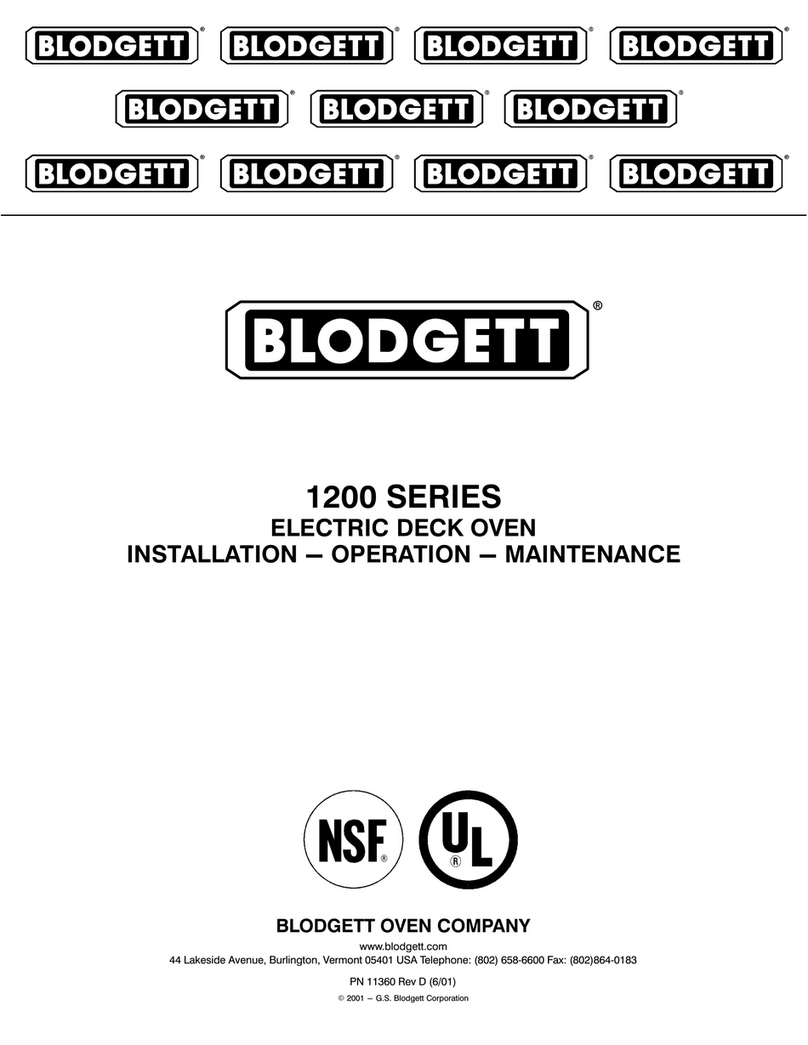
Blodgett
Blodgett 1200 Series Installation, operation and maintenance manual
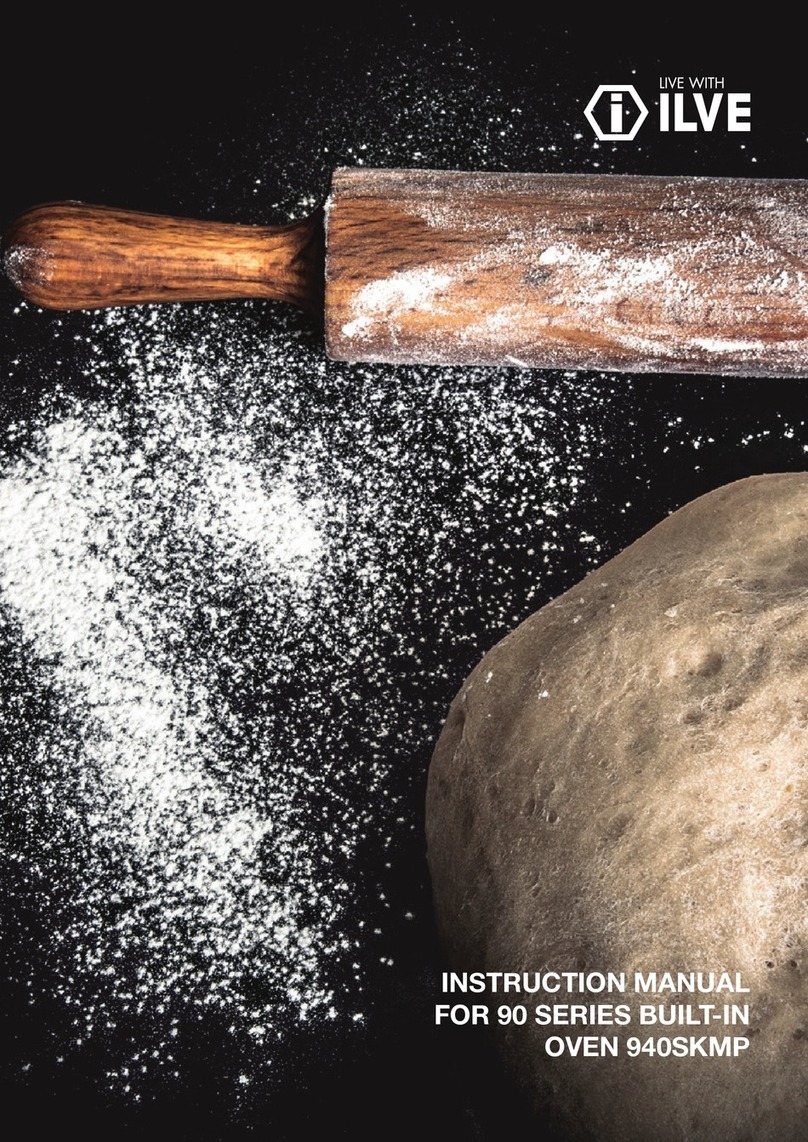
ILVE
ILVE 940SKMP instruction manual
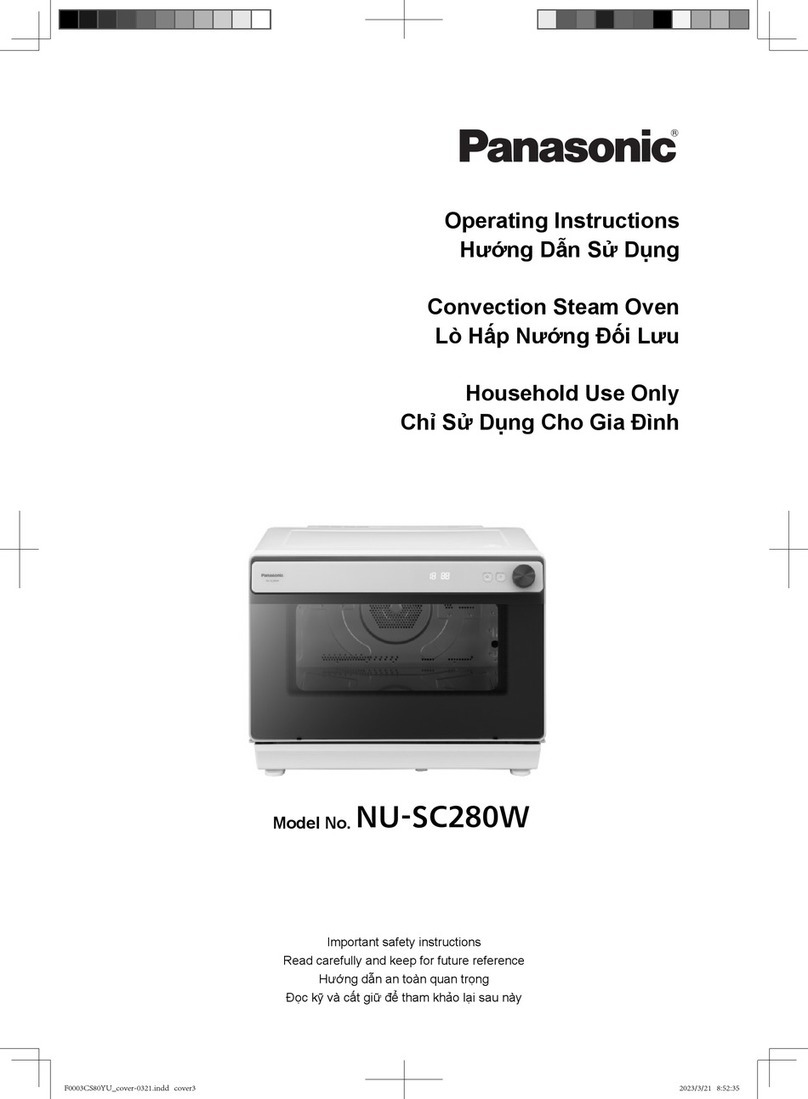
Panasonic
Panasonic NU-SC280WYUE operating instructions

Candy
Candy FCXM625X User instructions
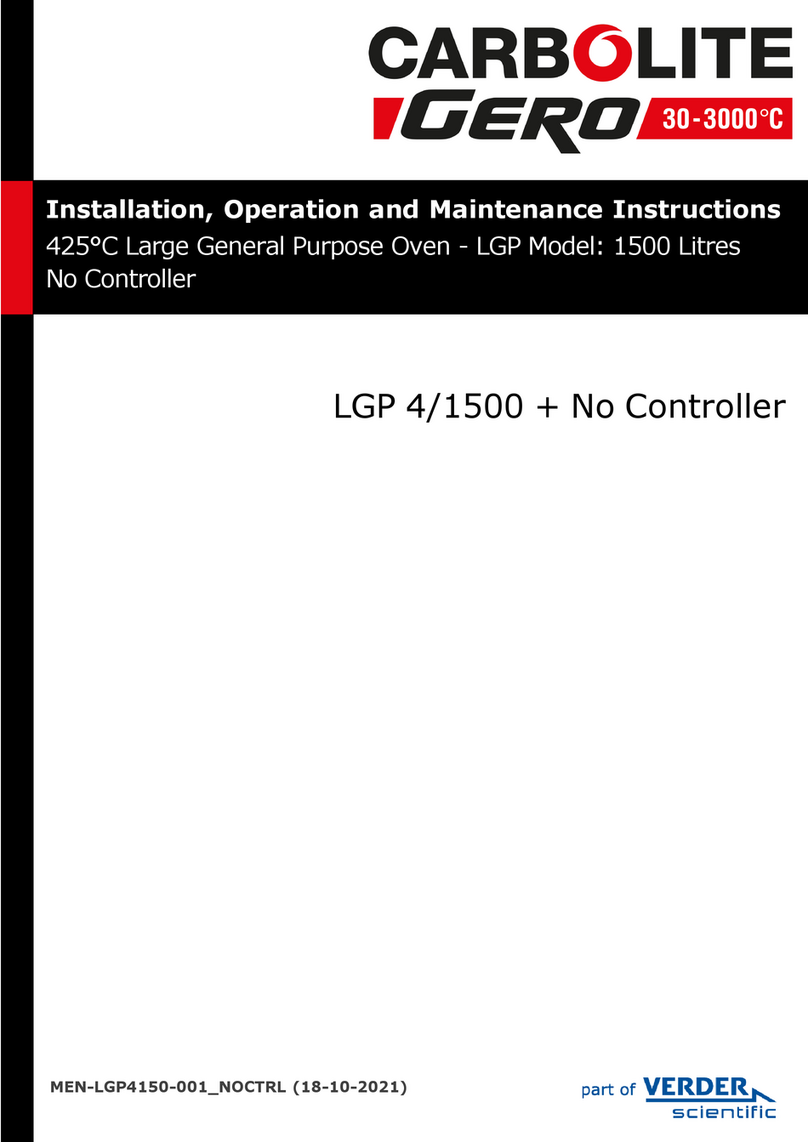
VERDER
VERDER CARBOLITE GERO LGP 4/1500 Installation, operation and maintenance instructions

Dimplex
Dimplex Pizzeria 600 Owners & installation manual
